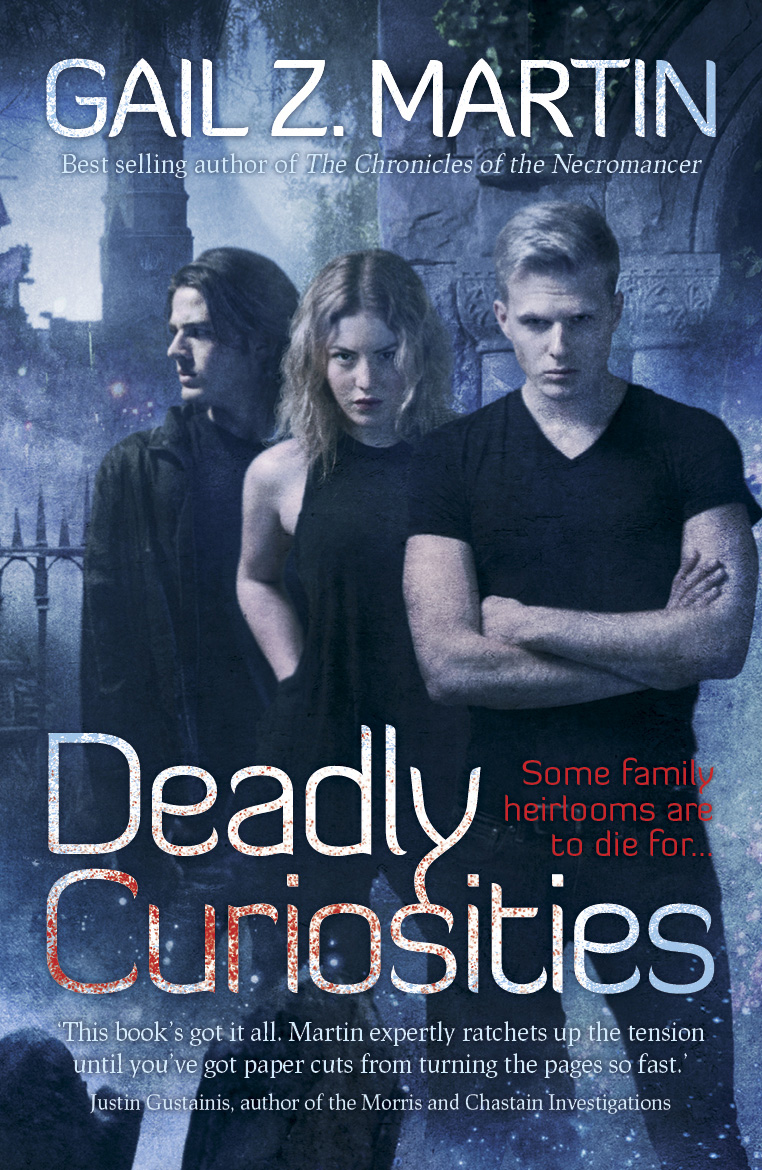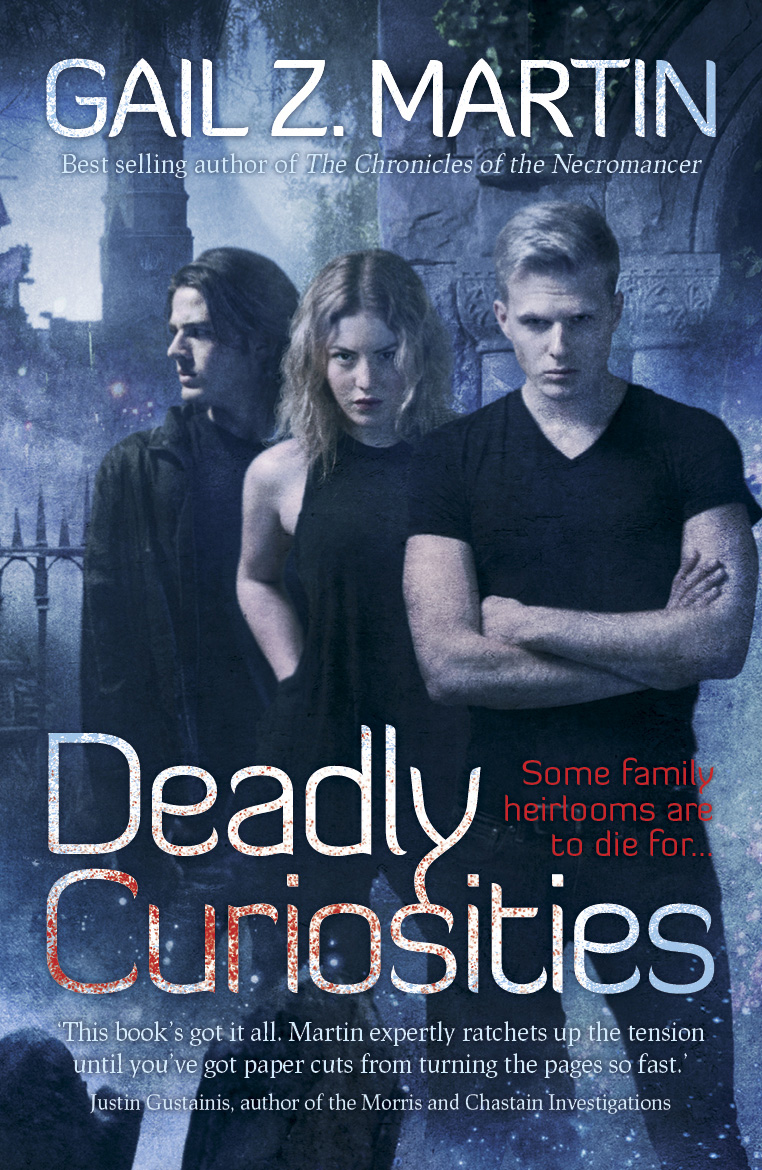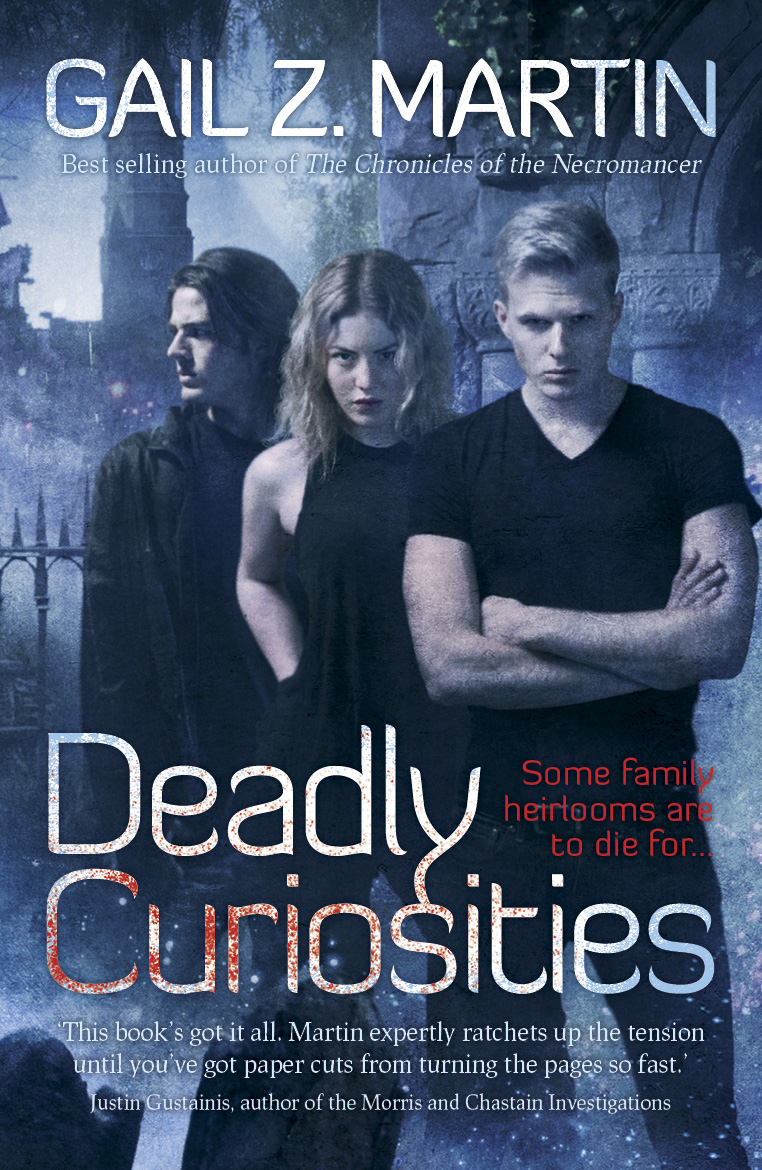
The ever-brilliant Gail Z Martin talks exploring hidden histories in antique shops – and the effects such searching has on her fiction…
For me, going into an antique store has always felt like Indiana Jones opening up the tomb of the pharaohs.
You never know what you’re going to find—or what might find you. Every object in that store once belonged to someone else and witnessed a part of that person’s life. That vase in the corner was once a wedding present. The people in those old sepia-toned photographs are unknown now, but they were part of someone’s family. The sterling silver snuff box or flask was part of a long-ago man-about-town’s accoutrements.
Each piece has a secret story. Every one of those items witnessed someone’s history, their joys and sorrows, accomplishments and failures. Some of those antiques might have even been part of history—carried into battle with a soldier, tucked away in an airman’s jacket, carefully packed in a carpet bag when a family emigrated. Many of the pieces were expensive or rare at the time they were purchased. Perhaps they were an object of desire, envy, obsession. All those tales to tell, all those secrets to reveal—locked in silence because while it’s true that dead men tell no tales, neither do their treasured objects.
I spent plenty of time at antique shops, flea markets and cemeteries as a kid. (Maybe that explains a lot, come to think of it.) For me, they always served as amazing story prompts. My dad could spent most of an afternoon in one curio store or another, brushing the dust off of odd finds, chatting up the store owner, digging through baskets, bins and piles to find a treasure.
I was bored, and boredom begets inventing diversions. So I would wander around, making up stories about the pieces I saw, imagining the exciting lives of their prior owners, figuring out for myself how the item came to be in the store. My imaginings included spies, pirates, cat burglars, jewel thieves, jaded mistresses and fancy gentlemen, down-at-the-heels aristocrats, exiled nobility and financially embarrassed robber barons. That odd necklace over there? Cursed—and I’d spin a tale that went into all the gory details. That music box? Haunted. Those strange masks from somewhere exotic—most definitely magical.
Of course, I knew the truth was more prosaic. Those antique shops had acquired their treasures from the estate sales of old people who died or went into nursing homes, or from the overstuffed houses of middle aged people downsizing to move to a Florida condo. Yard sales and consignment, lost luggage and abandoned storage units probably accounted for most of the other pieces. But even if the pieces weren’t really cursed or magical, they were haunted, in the sense that they were a touchstone to memories of people now dead.
Cleaning out my dad’s home when he passed away was a direct inspiration for the first Deadly Curiosities novel, and continues to inspire Vendetta and most of the Deadly Curiosities Adventures short stories. Some of the objects he collected were interesting, others were odd, but there were several that were downright spooky. In fact, there were a couple of pieces that clairvoyant friends advised me to get rid of, which was strange since they had never been to the house, had seen no photos, and shouldn’t have known the objects existed. I took their warnings seriously.
Mostly, I felt the weight of time as I cleaned out my parents’ home and my father’s collections. Many of the pieces he treasured were old by the time he bought them, passed from one collector to another over decades, or even centuries. I wanted to hear their stories—except for a few that I thought might not let me sleep well at night if I learned their secrets.
That’s really where the inspiration for Trifles and Folly—the antique and curio store owned by my main character, Cassidy Kincaide—came from for the Deadly Curiosities series. Except that I took it a step farther—the items weren’t just sometimes haunted, magical or cursed. That was just the beginning. Cassidy and Teag and Sorren had a secret mission—to get dangerous magical items off the market and out of the wrong hands.
Cassidy is a psychometric—she can read the history and magic of objects by touch. Not only does that clue her in to dangerous items, but it also provides an interesting defensive magic by enabling her to draw on the memories and emotions stored in old objects. Teag has Weaver magic, the ability to weave magic into fabrics and to weave >Gail’s site for full details…
Deadly Curiosities: Vendetta is out in December 2015
Pre-order: UK|US






